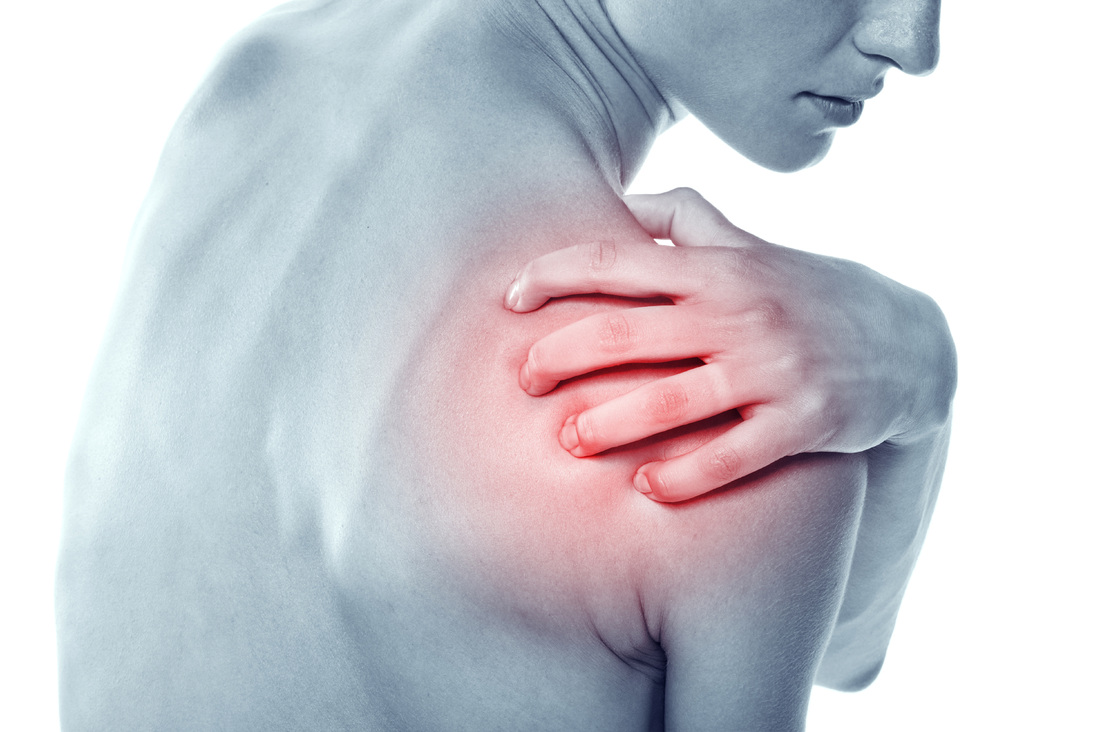Understanding shoulder pain in racquet sports

Understanding shoulder pain in racquet sports
(tennis, paddle, …)
Shoulder pain during sports activity in which it is necessary to raise the hand and arm above the head, is relatively common and difficult to treat, for different reasons:
- The origin is uncertain. There is usually no initial trauma, but it is the cause of a mechanism of overutilization.
- A wide variety of conditions can cause it, but the specific cause can be difficult to diagnose.
- Non-surgical treatment is a challenge for specialized physiotherapists.
Biomechanics of the launch.
At the time of the impact of the racquet with the ball are involved muscle groups of the lower extremities, abdomen, trunk and the most distal part of the upper extremities, to achieve transmit the maximum power of acceleration at the time of impact. This coordinated movement has become known as the "kinetic chain of the launch".
The athlete needs an extreme range of motion of his shoulder, which assists him to reach the maximum power of acceleration at the time of impact, but at the same time it is also necessary that there is sufficient stability at the joint level to prevent the appearance of injuries by the enormous forces generated during this movement.
Anatomical adaptations.
The athlete's shoulder undergoes a series of adaptations in response to the forces it must withstand:
- Increased muscles of the dominant arm.
- Anterior inclination of the scapula.
- Shoulder asymmetry.
- Increased external shoulder rotation.
Diagnostic approach and complementary imaging tests.
The initial assessment includes:
- In-depth analysis of the history of onset of pain.
- Physical exam:
- inspection.
- Range of motion and muscle power.
- Neuro-vascular and cervical examination.
Image tests:
-
- Radiographs.
- Magnetic resonance imaging and/or arthrosonance present greater sensitivity and specificity for the diagnosis of labrum lesions and partial cuff lesions.
Most Common Injuries
Internal glenohumeral rotation deficit
Once the racquet has impacted the ball, a deceleration phase begins in which the posterior capsule of the shoulder joint is tightened to slow the movement. The repetition of this phenomenon causes contractures of the posterior capsule, which ends up losing its normal elasticity. Typically these athletes have an excess of external rotation and a deficit of internal rotation.
The treatment with the highest success rate (90%) it consists of performing exercises aimed at recovering the elasticity of the posterior capsule.
SLAP
In this injury there is a rupture or tearing of the insertion of the long portion of the biceps at the upper edge of the glenoid and labrum and it is one of the most frequent injuries in these athletes. It is characterized by a decrease in power and deep pain in the shoulder.
It is recommended to start with a non-surgical treatment of the lesion and proceed to surgical repair if the symptomatology persists despite physiotherapy. Surgical treatment consists of arthroscopic repair of the break.
Cuff Injuries
The degree of injury is variable, ranging from inflammation or tendinitis, to partial breaks and less often complete breaks.
While tendinitis and partial ruptures can be recovered with more or less prolonged rehabilitative treatment, complete ruptures usually require arthroscopic repair of the lesion.
The greater the complexity of the injury, the lower the rate of patients who manage to return to the pre-injury competitive level.
Scapula-thoracic dyskinesia
It is an scapular asymmetry of the thrower's arm with respect to the contralateral, in which it is slightly lower and anterior and presents a more developed musculature. The alteration of the position of the scapula is accompanied by an alteration in the mechanics of the movement of the shoulder, which produces pain.
The treatment par excellence is directed physiotherapy emphasizing the reeducation of the coordination of the periscapular musculature.
Instability and laxity
One of the most prevalent theories about the cause of shoulder pain in these athletes is that excessive ligamentous laxity can occur secondary to overuse, which leads to instability, so it is necessary to investigate the presence of structural joint injuries.
Initially the recommended treatment is non-surgical, although if it is not effective and if there are structural lesions, arthroscopic surgical treatment is indicated.



